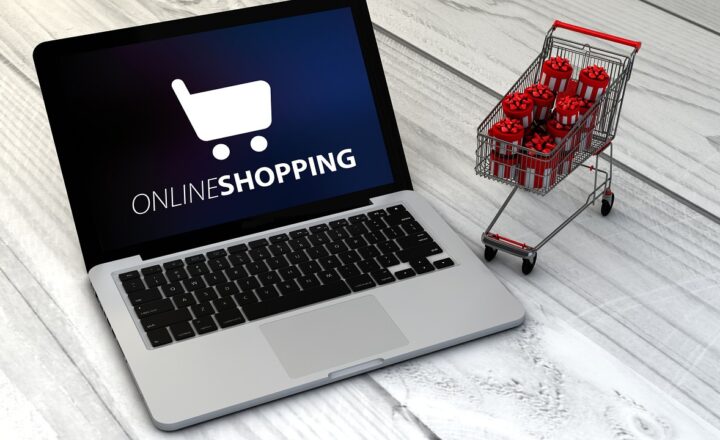The Psychology Behind Successful E-commerce: What Makes People Buy?
October 22, 2024

In the world of e-commerce, understanding consumer psychology is key to driving sales and building a successful online store. With countless options available to customers at the click of a button, it’s important to know what makes people choose one product over another, what motivates them to complete a purchase, and how you can optimize your online store to encourage buying behavior. In this article, we’ll explore the psychology behind successful e-commerce and the factors that influence purchasing decisions.
1. The Power of Social Proof: Why We Trust Others’ Choices
One of the most powerful psychological triggers in e-commerce is social proof. People are more likely to make a purchase if they see that others have already done so. This behavior is rooted in our instinct to look to others for guidance when making decisions.
Types of Social Proof:
- Customer Reviews: Positive reviews and ratings from other customers provide validation that the product is worth buying. A high number of reviews, especially from verified buyers, can increase trust in the product.
- Testimonials: Personal stories or endorsements from satisfied customers can resonate with potential buyers, giving them the confidence to proceed with their purchase.
- Influencer Endorsements: Many e-commerce brands partner with influencers to promote their products. Seeing a trusted figure use or recommend a product can sway potential buyers to follow suit.
Why It Works: Social proof taps into the psychological principle of conformity, where people are influenced by the actions of others. In e-commerce, it reduces uncertainty and gives customers the reassurance they need to move forward with their purchase.
How to Implement It: Showcase customer reviews, feature testimonials on product pages, and display user-generated content, such as photos or videos of customers using your products. Highlight products that are popular or trending to create a sense of urgency and social validation.
2. Scarcity and Urgency: Why We Fear Missing Out
Scarcity and urgency are powerful psychological drivers that create a fear of missing out (FOMO). When customers believe that a product is in limited supply or available for a limited time, they are more likely to act quickly to secure it.
Examples of Scarcity and Urgency Tactics:
- Limited-Time Offers: Display countdown timers on product pages to show that a sale or discount is about to expire, creating a sense of urgency.
- Low Stock Alerts: Show messages like “Only 3 left in stock” to encourage customers to purchase before the product sells out.
- Exclusive Offers: Highlight limited-edition or exclusive products to make customers feel they are getting something special.
Why It Works: Scarcity creates a sense of value and exclusivity, making customers feel that they might miss out on a great opportunity if they don’t act quickly. This taps into the psychological concept of loss aversion, where people are more motivated to avoid losing something than they are to gain something of equal value.
How to Implement It: Use scarcity and urgency strategically by offering limited-time discounts, showing stock levels, and creating exclusive promotions for your best customers.
3. The Decoy Effect: How Product Positioning Influences Choices
The decoy effect is a cognitive bias where people are more likely to choose a specific product when a less desirable option is presented alongside it. By strategically positioning product options, you can guide customers toward a particular choice.
How the Decoy Effect Works: Let’s say you offer three versions of a product: small, medium, and large. If the medium option is only slightly more expensive than the small option but offers significantly more value, customers are more likely to choose the medium size because it appears to be the best deal. The small option acts as a decoy, making the medium option seem like the logical choice.
Why It Works: The decoy effect takes advantage of the human tendency to compare options and look for the best value. By presenting a less appealing option alongside the one you want customers to choose, you can make the desired option seem more attractive.
How to Implement It: Offer tiered pricing or bundles where the middle option provides the most value for a slightly higher price. Position these options in a way that encourages customers to perceive the middle or higher-priced option as the best deal.
4. Personalization: Making Customers Feel Special
Personalization is a key element in e-commerce that enhances the shopping experience by tailoring it to the individual customer’s preferences, browsing history, and buying behavior. People are more likely to engage with and purchase from brands that understand their needs and offer relevant suggestions.
Examples of Personalization in E-commerce:
- Product Recommendations: Show customers personalized product suggestions based on their previous searches, purchases, or items they’ve viewed.
- Email Marketing: Send personalized emails with product recommendations, discounts, or reminders based on the customer’s past behavior.
- Dynamic Content: Use website elements that change depending on the visitor’s behavior, such as personalized homepage banners or curated product collections.
Why It Works: Personalization taps into the psychological principle of relevance. When customers feel that a brand understands their needs and preferences, they are more likely to engage and make a purchase. It also enhances the user experience by reducing the amount of time and effort customers need to find what they’re looking for.
How to Implement It: Use data from customer behavior, such as past purchases or browsing history, to create personalized product recommendations. Segment your email marketing lists to send targeted offers, and consider implementing AI-powered tools that personalize website content in real-time.
5. The Power of Free: How “Free” Influences Buying Decisions
The word “free” holds a special place in consumer psychology. Offering something for free, whether it’s free shipping, a free gift, or a free trial, can significantly influence a customer’s decision to buy. Even if the cost of the free item is factored into the price, customers perceive “free” as a valuable bonus.
Why Free Works: Free offers trigger an emotional response, making people feel like they are getting something extra or that they are saving money. This feeling of getting a great deal can increase the likelihood of a purchase, even if the product itself isn’t discounted.
How to Use “Free” in E-commerce:
- Free Shipping: Offer free shipping on orders over a certain amount to encourage larger purchases.
- Free Gifts: Include a free gift with purchases to increase the perceived value of the transaction.
- Free Trials: If you offer subscription services or software, a free trial can reduce the barrier to entry and encourage potential customers to try before they buy.
How to Implement It: Strategically offer free shipping, free gifts, or free trials in a way that benefits both you and the customer. Highlight these offers prominently on your website and in your marketing campaigns to capture attention and incentivize purchases.
Conclusion: Using Psychology to Boost Your E-commerce Success
Understanding the psychology behind consumer behavior is essential for any e-commerce business looking to boost sales and enhance the customer experience. By leveraging strategies such as social proof, scarcity, personalization, and the power of “free,” you can create a more engaging shopping experience that encourages people to make a purchase. As you continue to refine your e-commerce strategy, keep in mind that the key to success lies in meeting customer needs, reducing friction in the buying process, and providing a personalized, relevant experience.







